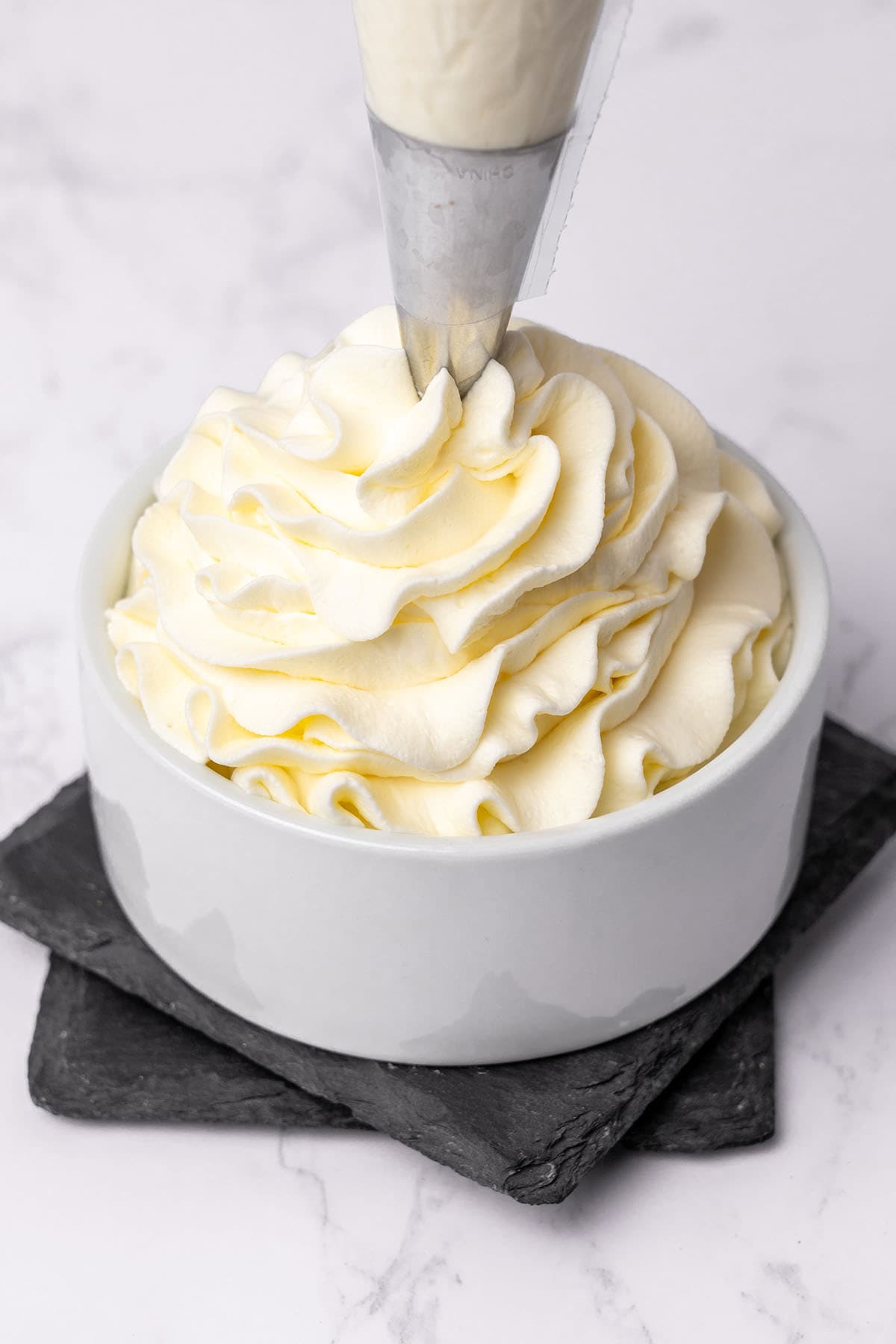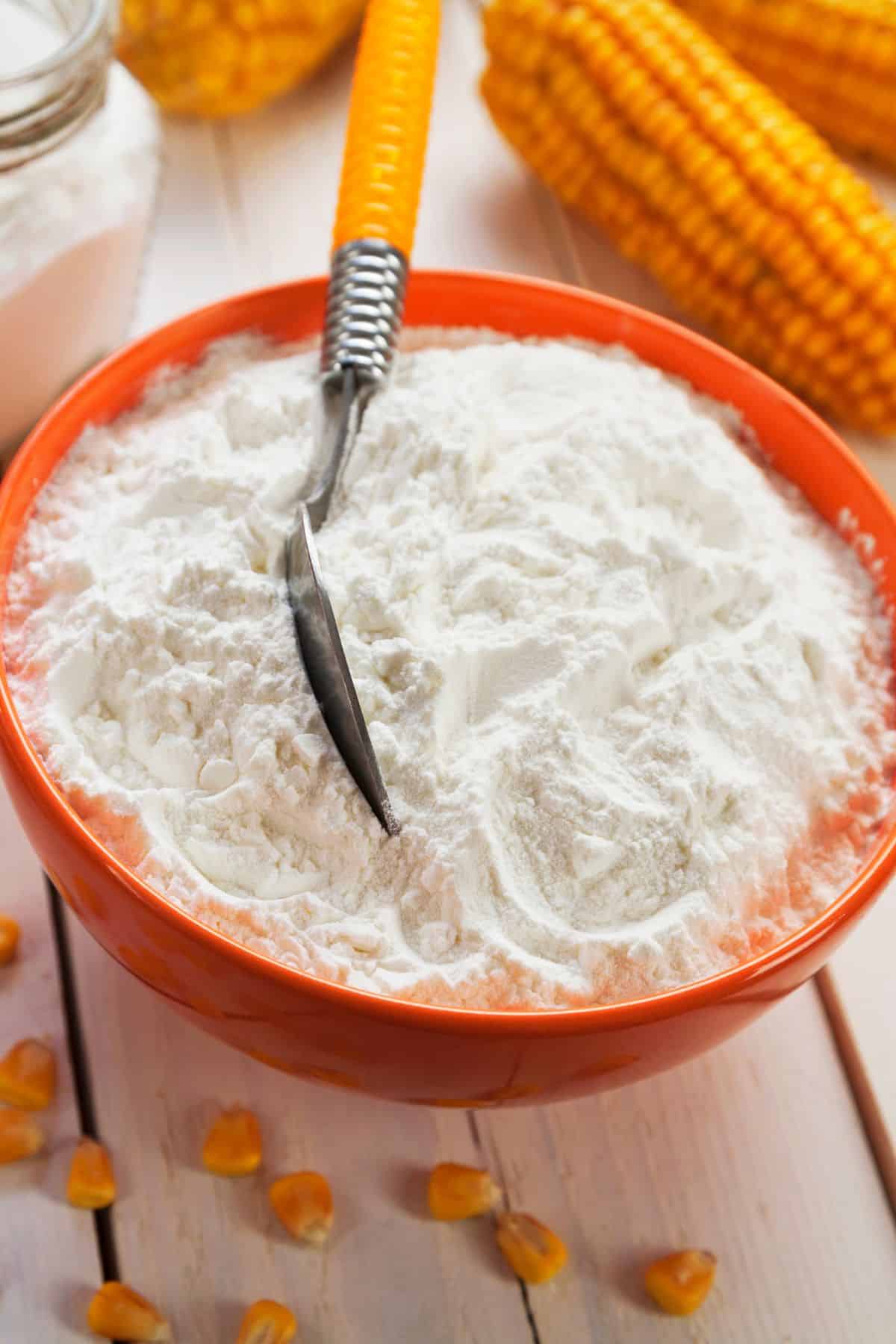In this baking guide, we are going to answer what is cream of tartar and uncover how harnessing its power can elevate your baking game. This seemingly unassuming acidic ingredient is the secret key to crafting many delectable desserts such as airy angel food cake, yummy snickerdoodle cookies, and beloved French macarons!

Jump to:
What is Cream of Tartar?
Scientifically known as potassium hydrogen tartrate, cream of tartar is derived as a byproduct of winemaking. Its acidic nature, derived from tartaric acid, boasts a unique chemical composition that makes it a baking powerhouse that has the ability to impact the texture, stability, and taste of baked goods.
Discovering what is cream of tartar made of only adds another layer to its mystique!
Is cream of tartar just baking soda?
While both are common ingredients in the baking aisle, they serve different purposes. Baking soda is a leavening agent that requires an acidic counterpart to activate its rising power. On the other hand, bakers often use cream of tartar in conjunction with baking soda because it provides the necessary acidity.
It is useful to know that baking powder is a combination of non-acidic baking soda and a dry acid, eg. cream of tartar. The liquid in the batter activates this reaction, whereas baking soda activates fully when paired with an external acidic element.
What is the purpose of cream of tartar?
Even just a pinch can take your baked goods from ordinary to extraordinary by enhancing their flavor and texture.
So, what is cream of tartar good for?
- Stabilizing Whipped Cream: When making Chantilly cream or Cool whip adding just a pinch helps the whipped cream maintain its shape and stay firm for a longer period of time.
- Preventing Sugar Crystallization: When making caramel or fudge, it helps to prevent sugar crystallization.
- Aiding in Leavening: Recipes such as angel food cake, pavlova, meringues, French macarons, and soufflés frequently incorporate a little to stabilize and enhance the volume of the egg whites. The leavening action contributes to the light and airy texture of these delicate desserts.
- Activating Baking Soda: Combining it with baking soda can create a perfect balance in both a sugar cookie and a chocolate chip cookie recipe. Adding cream of tartar in cookies provides the necessary acidity to activate the baking soda, contributing to the texture.
- Adding Tangy Flavor: In snickerdoodle cookie recipes, it not only influences the texture but also imparts a slightly tangy flavor. The tanginess complements the sweetness of the cookie, creating a distinctive and delicious taste.

Cream of tartar vs. baking powder
Understanding the difference between these two baking essentials is crucial. Cream of tartar contributes acidity to recipes and often works together with baking soda for optimal leavening.
However, baking powder serves as a self-contained leavening agent that already includes both an acid (commonly cream of tartar) and a base (usually baking soda). This distinction makes baking powder a more versatile choice for a broader array of recipes because it eliminates the need for separate acid additions.
Cream of tartar vs. cornstarch
These two white powdery substances have distinct roles in baking, serving very different purposes. Cream of tartar functions as a leavening agent, a way to add a touch of tang, and as a stabilizer in desserts like meringues.
In contrast, cornstarch plays a pivotal role as a thickening agent in sauces, pastry cream, and pies like my no bake apple pie with graham cracker crust. You can also find it in my classic pumpkin pie recipe!
Cornstarch also contributes to creating a softer and more delicate crumb in cookies and cakes. My homemade ladyfingers are a perfect example.

What can replace cream of tartar?
Now that we've covered what is cream of tartar used for, let's explore substitute options. So, the next time you find yourself in the midst of a recipe and discover that you're missing this key ingredient, there's no need to worry!
So what is a good cream of tartar substitute? It depends upon its role in your recipe.
To Stabilize Egg Whites
When the goal is to stabilize egg whites in recipes like meringues, macarons, or fluffy sponge cake, there are alternatives that work just as well.
- White Vinegar: You need to use four times more vinegar. For example, if your recipe calls for ½ teaspoon cream of tartar you’ll have to use 2 teaspoons of vinegar. This substitute will impart a mild tang but it won’t overpower the taste of your dessert.
- Lemon Juice: Similar to white vinegar, you can use 4 times the amount of fresh lemon juice. This substitute works well if you want to add a subtle citrus note.
To Stabilize Whipped Cream
It also helps to maintain structure and prevents whipped cream from deflating. However, there are several alternative stabilizers that can also be effective.
- Cornstarch: Helps absorb excess moisture, contributing to the stability of the whipped cream. Just mix about ½ to 1 teaspoon of cornstarch per cup of heavy cream with the powdered sugar before whipping.
- Gelatin: Provides additional structure to the whipped cream and helps it hold its shape as I explain it in my cool whip recipe. Dissolve about ½ to 1 teaspoon of unflavored gelatin in 4 tablespoons of water and then add it to the heavy cream before whipping.
- Mascarpone Cheese: Adds richness and stability helping it hold up for a longer time. Fold in about 1 to 2 tablespoons of mascarpone cheese per cup of cream into the whipped cream.
- Instant Pudding Mix: The stabilizers in the pudding mix help the whipped cream hold its shape. Just incorporate about 1 to 2 tablespoons per cup of heavy cream into the powdered sugar before whipping.
To Prevent Crystallization
When making caramel and sugar syrups, adding a dash is a great way to prevent the sugar from crystallizing. However, these substitutes will work just as well.
- Lemon Juice or White Vinegar: They both provide acidity that helps to inhibit sugar from crystallizing as it cooks. Use approximately ¼ to ½ teaspoon per cup of sugar.
- Corn Syrup: This kitchen staple is highly effective at preventing crystallization and adds a touch of sweetness. To use it as a substitute, simply replace ¼ of the sugar in your recipe with corn syrup. Alternatively, you can use agave, honey, maple syrup, or golden syrup if you prefer. Just keep in mind that they will alter the taste.
Leavening Agent
If you are looking for a substitute to work as a leavening agent in combination with baking soda, you’ve got a few different options.
- Baking Powder: Serves as a convenient substitute when it functions as a leavening agent. Just use 3 parts baking powder to replace 2 parts cream of tartar. For example, you would replace ½ teaspoon with ¾ teaspoon of baking powder.
- Yogurt or Buttermilk: Either of these options can provide enough acidity to react with baking soda. For every ¼ teaspoon of cream of tartar, you’ll need to omit ½ cup of liquid from your recipe and replace it with yogurt or buttermilk.
- White Vinegar or Lemon Juice: Both easily provide enough acid to activate baking powder. Just use about ½ teaspoon for every ¼ teaspoon of cream of tartar.

Cream of Tartar FAQs
Its scientific name is potassium hydrogen tartrate.
It originates as a byproduct of winemaking, forming during the fermentation process in wine barrels.
The name has historical roots and comes from the substance's original method of extraction. Potassium hydrogen tartrate forms as crystals during the fermentation of grape juice in wine barrels. The term "cream" signifies the cream-colored crystals, while "tartar" stems from tartaric acid, the compound that imparts the ingredient's acidic properties.
While it doesn't necessarily spoil, its effectiveness can diminish over time. It's best to check for any signs of discoloration or changes in odor to determine its freshness.
Yes, when making meringue, it is common to add it to egg whites to stabilize them and prevent weeping.

Leave a Reply